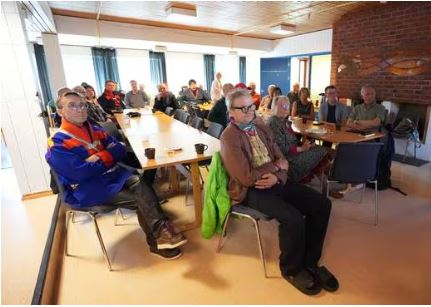The municipality of Karasjok, located in Finnmark, Norway's northernmost state, is not the direct property of its nearly two thousand registered residents. This was determined by a narrow decision from the Supreme Court of Norway on 31 May 2024. The court, comprising eleven judges, was sharply divided in its ruling.
Five judges supported Ingvald Falch, who authored the majority opinion, while four judges aligned with Espen Bergh, who argued that the residents should own the 5,400 square kilometer area at the center of the dispute. The final vote was six to five.
Before reaching the Supreme Court, the case was heard by the Utmarksdomstolen, a special court that deals with the traditional rights of the Sami people and land claims in their region. The Utmarksdomstolen had initially ruled in favor of the residents, granting them equal ownership rights to Karasjok, to be administered through the holding company FeFo, Finnmarkseiendommen Finnmárkkuopmodat, which manages 95 percent of the county's land.
The Guttorms group, representing several large Sami families, also claimed ownership of Karasjok, but their claim was rejected by the Utmarksdomstolen during the proceedings.
Supreme Court Decision
In the Supreme Court's final decision, Ingvald Falch and the narrow majority concluded that the Norwegian state had acquired Karasjok in 1751 when the region became part of Norway. As a result, fundamental property rights belong to the state rather than the municipality's residents. However, all state residents indirectly benefit from the area's management by FeFo.
Historically, before FeFo's establishment, Statskog, a state-owned company, was considered the primary owner of nearly the entire county. This changed with the enactment of the Finnmarksloven, which granted the residents ownership rights through FeFo.
The majority's main argument, supported by FeFo, was that the usage of the land did not follow municipal boundaries but was determined by the locations of various settlements and the migration patterns of Sami reindeer herds. "Different users and user groups have utilized different parts of the shared space. This is evident from the numerous claims for rights submitted by various localities and groups," Falch explained in his reasoning for the majority decision.
Reactions to the Decision
It was clear in advance that the decision would provoke strong reactions regardless of the result. For the supporters of local property rights, the Karasjok case was a significant test for Sami rights. They believed that losing Karasjok would mean losing a historic opportunity to own their traditional areas.
Opponents, however, argued that many people other than the municipality's residents have used the area and thereby acquired rights. This is especially true for reindeer herding, which moves between the hinterland and the coast. They feared that new property boundaries through the county would divide the Finnmark population and create new injustices, as argued by the Nordkalottfolket party, among others.
The local population demanded ownership of the area because they believe they have used and effectively ruled it for several hundred years. They argued that the state has never had the citizens' acceptance that it owns the area.
Many have portrayed the case as a dispute between the state and the Sami, but that is not entirely correct. The state's property rights to Finnmark have long since been transferred to all residents of the county. Since 2006, Sami and other residents have jointly owned the land through the company Finnmarkseiendommen (FeFo). It was FeFo that appealed the judgment from the Utmarksdomstolen to the Supreme Court.
In previous instances, the local population had won the case twice. Both the Finnmark Commission and the Utmarksdomstolen decided in their favor. However, both decisions were made with the narrowest possible majority, similar to the Supreme Court's decision.
The tags below provide an opportunity to view previously posted related news within the selected category


